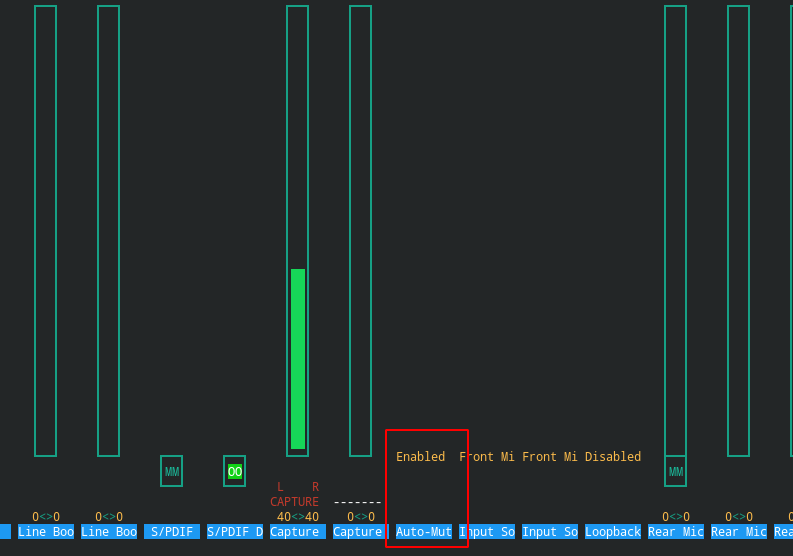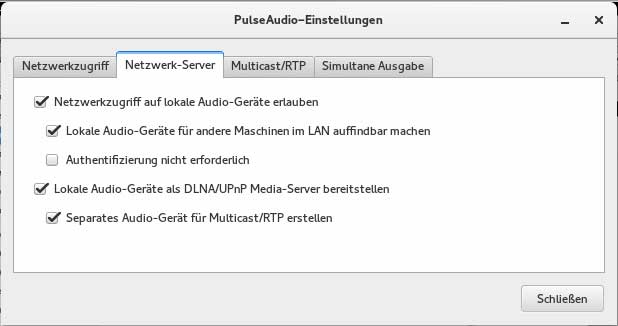

If there's a way to do this while having pavucontrol-qt closed that would be great or to close it to the system tray or a jack-for-dummies guide that'd be great. You should now have your game console's audio playing through your speakers/headphones and you'll be able to use your microphone on Discord! Leave pavucontrol-qt open, change your monitor's input to your game consoles and try Discord's microphone check. Under pavucontrol-qt change your input device to Rear Microphone since Discord depends on Pulseaudio. Now add load-module module-loopback latency_msec=to your /etc/pulse/default.pa and use whatever latency you want. Enable Loopback and set Rear/Front Mic and their Boost to 0 but do not mute them. I set both to Rear Mic, CAPTURE L R is your Mic's volume. Set your Line volume/ Boost and set your Input Sources to where ever your microphone is plugged into. I'm using a Realtek ALC1220 so I selected HD Audio Generic. go to alsamixer and press F5 to view all audio devices and F6 select the audio card you're using. I figured out a way to do it with ALSAMixer's loopback, but I need to leave pavucontrol-qt open in order for it to work. Only want to use my microphone with Discord, otherwise the people I'm talking to will only hear the audio from my game.
#PULSEAUDIO LOOPBACK WINDOWS#
I prefer to use JACK for mixing multiple audio sourcesĪssisted some friends new to Linux to use jack_mixer similar to how they used to use an application called Voicemeeter in Windows I tried something similar in Pulseaudio a few years ago and found it too complex and unreliable and lot of extra latency (delay) from looping through mutiple modules To combine audio streams would also need to use Pulseaudio module-combine-sink Information for this can be found using pactl list modulesand pactl list cards 0.849 0.000) D: pulseaudio module-loopback.c: Loopback overall latency is 17.31 ms + 0.72 ms + 0.03 ms 18.07 ms ( 0.849 0.000) D: pulseaudio module-loopback.c: Should buffer 4224 bytes, buffered at minimum 128 bytes ( 0.849 0.000) I: pulseaudio module-loopback.c: New rate of 43998 Hz not within 2 of 44100 Hz, forcing smaller. May need to remove Pulseaudio automatic detection of audio devices ( module-udev-detect)Īnd load input and output modules manually( module_alsa_in and module_alsa_out) Your hardware probably does if it works in another OSīut only one sub-device may be available at any time in default Pulseaudio Hardware must have 2 audio capture device/sub-devices listed in arecord -l to support simultaneous use of both Line-in and Microphone No OS can be configured with default tools to have 2 'mix-minus':ĭiscord mix = Mic + Line-In - Discord audio Or do you want mix of your microphone + Line-in ?
#PULSEAUDIO LOOPBACK HOW TO#
How to RunĬlone/Download this repository and run start.Are you trying to use only microphone with discord

pavucontrol is an optional requirement, but should be used along side this program if you want specific applications to listen the monitor of a certain null sink, unless you utilize remapped sources. The Python Pulseaudio Loopback Tool currently allows the user to easily create custom named null sinks, loopbacks with a custom source and sink, remap sources with a specific name, and unload all the modules previously listed. Every sink has a monitor that can be used as a source (for loopback and routing). This tool was created to be an easy way to create and destroy basic loopbacks and virtual null sinks using a GUI, rather than having to find and enter the commands in the command line. Where an audio stream can be routed, what you write/input into.

Unload Loopbacks, Null Sinks, and Remapped Sources.Now add load-module module-loopback latencymsecto your /etc/pulse/default.pa and use whatever latency you want. Create Loopbacks with a specific Sink and Source Enable Loopback and set Rear/Front Mic and their Boost to 0 but do not mute them.A tool written in python using tkinter to allow a user to create basic loopbacks and virtual sinks without digging into the command line too much Quick Feature List


 0 kommentar(er)
0 kommentar(er)
